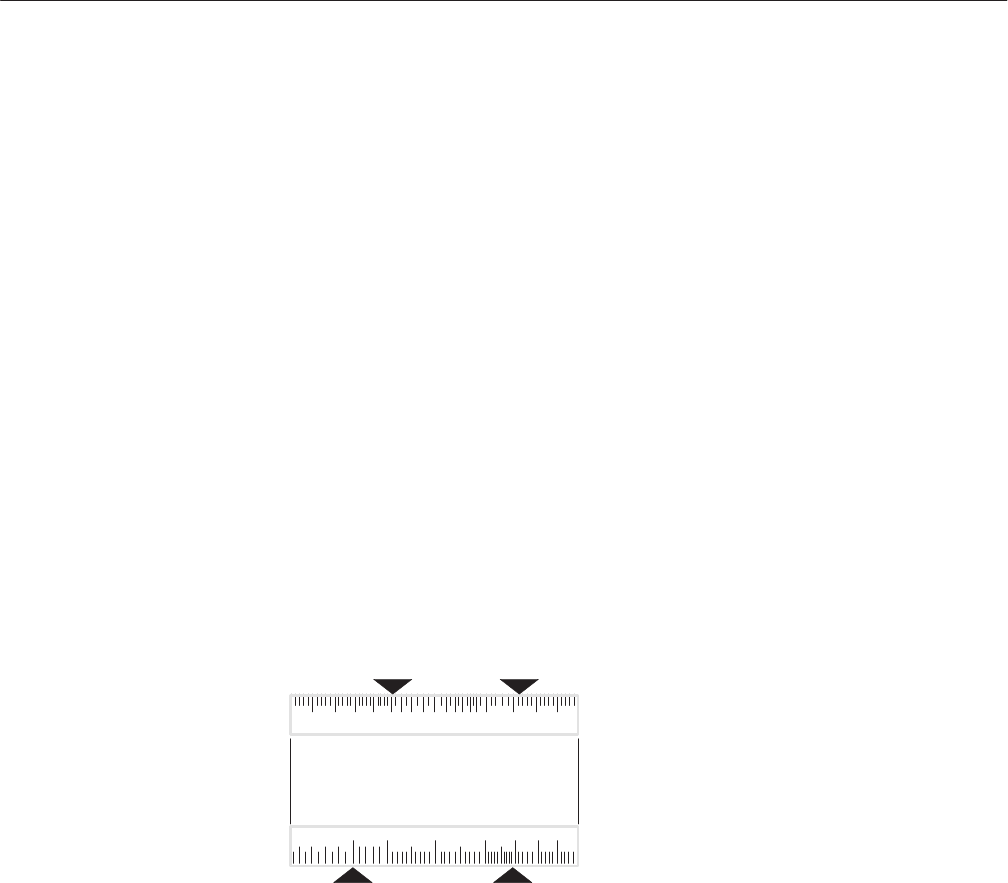
Appendix D: Application Note
1502C MTDR User Manual
D–7
You should note that the peak level of any reflection that does not have a
discernable plateau might be an erroneous indication of the impedance disconti-
nuity that caused it. There might be several reasons for the error. 1) The
discontinuity might occupy such a short segment of the line compared to the V
P
of the line and the risetime of the test pulse wavefront that part of the wavefront
starts to emerge from the segment while the remainder is still entering. This
causes a spike-shaped reflection, the amplitude of which might vary depending
on the risetime of the test pulse, how badly the risetime has been degraded by the
cable before it arrives, and how much attenuation the cable might impose on the
reflection before it arrives back at the source. 2) If the risetime of the TDR
system is too long, a reflection with a plateau will appear as a spike.
Centimeters vs. Inches or Meters vs. Feet
Inches and Centimeters: A given number of inches can be converted to
centimeters by placing the point on the sliding scale that corresponds to that
number next to the stationary arrow labeled INCHES, then reading the distance
in centimeters next to the point of the arrow labeled CENTIMETERS. Likewise,
centimeters are converted to inches using these directions in reverse.
1.0
1 inch = 2.54 cm
15 m = 49.2 ft
INCHES CENTIMETERS
METERS FEET
ONE–WAY DISTANCE
TO OR BETWEEN FAULT, SPLICE,
CONNECTOR, LOAD, END, OR OTHER
IMPEDANCE DISCONTINUITY
15
5 .6 .7 .8 1.5 2.0 3 4
0 20 30 40 50 60708
Figure D–6: English-Metric, Metric-English Conversion Scales
Meters and Feet: A given number of meters can be converted to feet by placing
the point on the sliding scale that corresponds to that number next to the
stationary arrow labeled METERS, then reading the distance in feet next to the
point of the arrow labeled FEET. Likewise, feet are converted to meters using
these directions in reverse.
